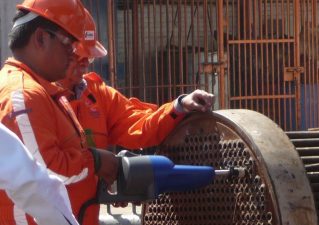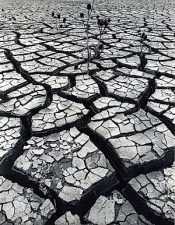There are a host of water-borne diseases that can harm you and your family if your water is not properly sanitized. Just because you don’t drink it, it doesn’t mean you don’t have to make sure your water is safe since there are a lot of bacteria that can irritate your skin or worse – go through them. Since water is a basic requirement for homes, it’s worth it to check if your tap is clear for usage, not to mention drinking it.
Purification
The process of purification removes 4 of the most common contaminants in the water. It is defined by the Safe Drinking Water Act (SDWA), a federal law that ensures the public of safe drinking water supply, as anything found in the water other than the molecules that compose water. Since we know that minerals such as magnesium and calcium are considered contaminants but reasonable levels may be acceptable for a number of uses, including drinking. So that leaves us with the question, which contaminants make the supply unsafe for usage? And when we are drinking tap water, how do we eliminate the bad smell? Some answers for you are below.
Physical Contaminants
Sediment particles from rock and soil are considered physical contaminants. They are generally harmless when ingested, but if they are significantly bigger or in large amounts, they can cause harm to the body.
Chemical Contaminants
These contaminants can be natural or synthetic, which include: pesticides, toxins, nitrogen, bleach, mercury, and pharmaceutical or industrial byproducts. They are usually considered harmful even in minute amounts.
Biological Contaminants
These are microbes that dwell in the water, such as bacteria, protozoa, and viruses. Many of these contaminants are harmful when ingested or even when it comes in contact with the skin.
It’s important that you’re able to identify what contaminants are present in your water and what purification method is used to treat it. If you’re unsure of what’s in your water, it would be better to purify them just as well. Here are some proven methods to purify your water:
Filtration
This is a common method for purifying personal or household water supply. The system comes in many sizes, and because of its versatility, some have even developed portable filtration, which makes it convenient for those who spend time outdoors. It is effectively used at home by integrating them as an under sink water filter and refrigerators, which purifies the water supply by connecting the line through the system. It’s able to remove a number of physical contaminants, bacteria, parasites, and some heavy metals. They can also improve the taste of the water.
The system has various filter media often or devices that have pores measured in microns. This determines the amount of filtration it does on the water. There are also those that incorporate carbon filters that easily absorb particles in the water, such as chemicals like pesticides and herbicides, which significantly improves the taste of the water. Combining with other purification systems enables it to be effective against viruses. It’s important to remember that you should regularly replace your filter media depending on the size and usage. Waterdrop under sink water filter would be a great choice.
Chlorine
Chlorine is an effective purifier when used in moderate amounts. It can eliminate numerous types of bacteria and viruses and is an inexpensive method of purification. A lot of communities or small municipalities use it to make their water safe for drinking.
Household-grade chlorine typically has a 4% to 6% chlorine concentration, which you can use at home for your personal use. You can put two drops for every liter or around eight drops for every gallon. You need to allow 30 minutes or more before you can drink it. This is great if your water comes from a natural underground reservoir. It’s also useful to put this in your water bottle when you’re out camping and will be using natural sources.
Although chlorine is effective against any number of bacteria and most viruses, there are still those that are more resistant. Norovirus that causes diarrhea is pretty resistant, as well as other parasites like Giardia that has a protective coating that can withstand chlorine under 45 minutes, so you may need to let your water sit for more than an hour before you drink it.
For chlorine tablets, you can drop it into your container and let it sit for 45 minutes to allow the chemicals to destroy the bacteria and viruses. Purification tablets are convenient for those who travel a lot abroad. They are lightweight, and you don’t have to measure the liquid every time you use it. Humanitarian aids recognize its efficacy and convenience that they provide them to places where water is notoriously known to be unstable.
Reverse Osmosis
A similar set-up to filtration but an added element by forcing water through a semipermeable membrane to purify the water. It’s effective against most bacteria, viruses, particulates, and heavy metals. It can also improve water’s taste and is usually used in commercial or industrial purification facilities. Reverse osmosis (RO) works by applying external pressure to force the water to move from a concentrated solution to a less concentrated solution. The semipermeable between each sector allows only for the smaller particles to pass through it, resulting in a higher level of purification. Because of this highly technical process, RO systems are often expensive and require a lot of maintenance.
UV Purification
This uses ultraviolet rays to destroy most microorganisms in the water quickly. It is also an added process to purify water in municipalities but has now been made available for home use. This process is effective against pathogens such as bacteria, viruses, molds, and parasites. The system concentrates the UV light, which makes it more powerful than naturally letting it get exposed to the sun. It also takes a lot less time to disinfect the water compared to chlorination; however, it doesn’t filter out heavy metals.
Boiling
This is the oldest known method of water purification used by our ancestors when they’ve discovered that most of the diseases in their village are caused by their water source. It applies the laws of pasteurization wherein the milk, in this case, water is heated beyond 70 degrees Celsius to eliminate bacteria. If a thermometer is not readily available, the formation of bubbles is a useful indicator that it’s properly heated. Just let it sit there for a minute or two before you take the container from the fire and let it cool down. It eliminates a host of pathogens and bacteria, but it can’t take out heavy metals, and it’s a little inconvenient than the other methods.
Clean water is a right of every human being as it’s been one of the major endeavors of human civilization to provide potable water to families. Some of the methods above can be used as a stand-alone method, or you can combine some of them to make sure that you have safe water for use.




